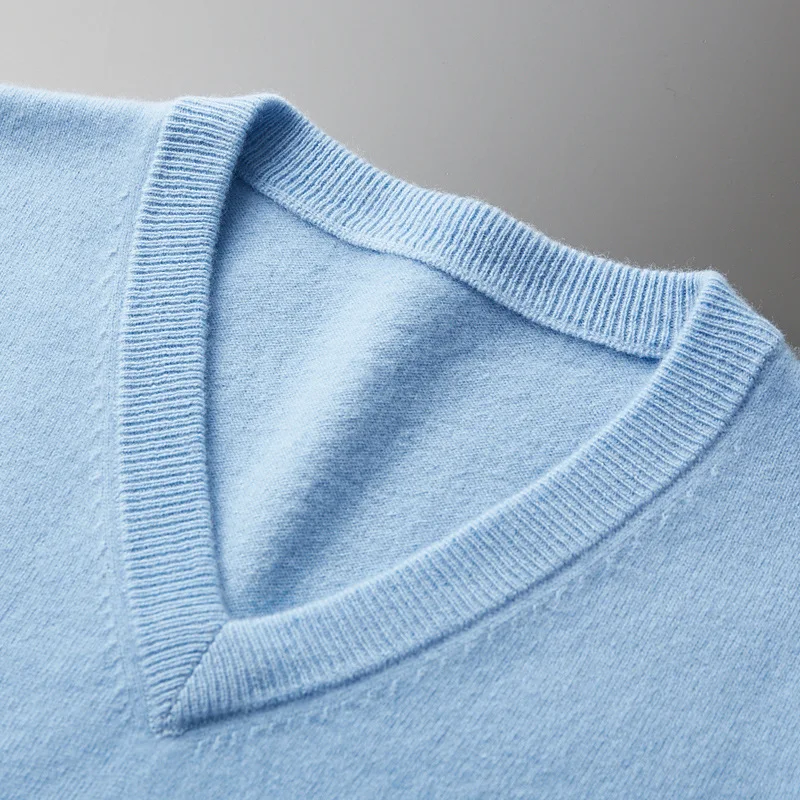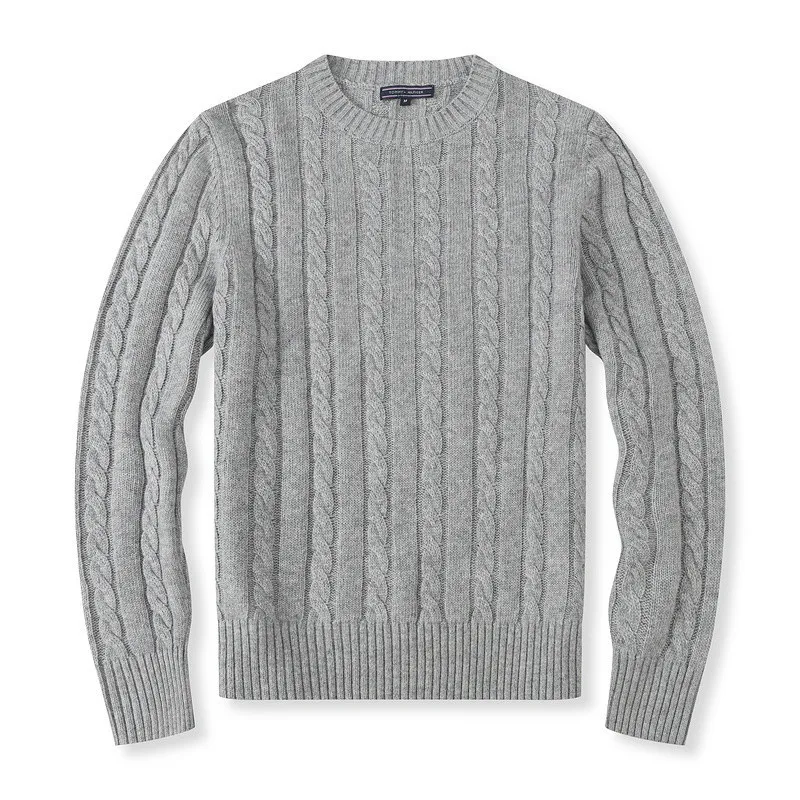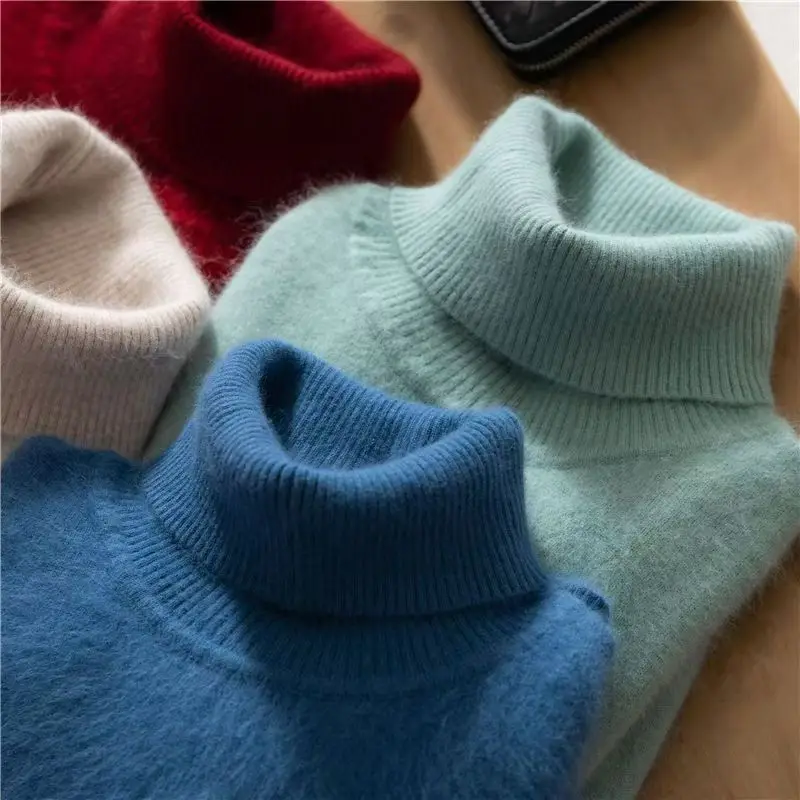Cashmere has long held a reputation for being a “dry clean only” luxury fabric, but this common misconception keeps many from properly caring for their beloved garments. Contrary to popular belief, washing cashmere at home isn’t just possible—it’s actually preferable for maintaining the fabric’s luxurious feel and extending its lifespan.
When done correctly, hand washing cashmere helps preserve its natural oils and softness that harsh dry cleaning chemicals often strip away. The gentle approach of home washing is more aligned with the delicate nature of cashmere fibers, which come from the soft undercoat of cashmere goats. Plus, learning to wash your cashmere at home will save you considerable money on professional cleaning services over time.
In this comprehensive guide, you’ll discover everything you need to know about properly washing and caring for your cashmere garments. We’ll walk through each step of the process—from gathering the right supplies and washing techniques to proper drying methods and long-term care practices. You’ll gain confidence in handling even your most precious cashmere pieces.
The science behind proper cashmere care is fascinating—natural protein fibers like cashmere actually benefit from occasional contact with water when handled correctly. This helps the fibers maintain elasticity while removing accumulated oils and debris that can damage fibers over time. Following our ultimate guide to cashmere care and washing will help ensure your cherished pieces remain beautiful for years to come.
Understanding Cashmere: Why Proper Washing Matters
Cashmere is a luxury fiber harvested from the soft undercoat of cashmere goats. What makes these fibers so special is their incredible fineness—typically between 14-16 microns in diameter, compared to human hair which averages 70-100 microns. This extraordinary delicacy is what gives cashmere its signature softness and lightweight warmth, but it also requires special care during cleaning.
Despite what many care labels suggest, cashmere can absolutely be washed at home. Manufacturers often default to “dry clean only” labels to protect themselves legally, not because it’s the best care method. In fact, the chemical solvents used in dry cleaning can gradually strip cashmere of its natural oils, leading to a coarser feel over time. Proper hand washing, meanwhile, can actually improve cashmere’s softness and longevity.
The risks of improper washing, however, are significant:
- Shrinkage due to agitation and temperature shock
- Stretching from improper handling when wet
- Felting (when fibers permanently mat together)
- Pilling acceleration
- Loss of softness and natural luster
- Misshapen garments that never regain their proper form
Understanding the benefits of hand washing versus professional dry cleaning helps preserve your investment in quality pieces. With the right approach and materials, you can safely clean your cashmere sweaters at home while maintaining their luxurious quality.
Essential Supplies for Washing Cashmere
Before beginning the washing process, gather these essential supplies to ensure you have everything needed for properly cleaning your cashmere:
Mild detergent – Choose a wool-specific wash or baby shampoo without enzymes or brighteners. Look for pH-neutral formulas specifically designed for delicate fibers. Regular detergents can be too harsh and strip natural oils.
Clean basin or sink – Use a vessel large enough to fully submerge your garment without crowding. Make sure it’s thoroughly clean to prevent transferring any residue to your cashmere.
Clean, white towels – You’ll need several absorbent towels for the drying process. White or colorfast towels prevent any dye transfer. Microfiber or cotton towels work best.
Mesh laundry bag – If you’ll attempt machine washing, a fine mesh bag provides essential protection for your garment.
Flat drying surface – A sweater drying rack, clean mattress, or towel-covered surface where your cashmere can dry flat undisturbed.
Optional tools – A cashmere comb or fabric shaver for dealing with pilling, and cedar or lavender sachets for storage.
With these supplies ready, you’ll be well-prepared to safely clean your cashmere turtlenecks and other precious items without risking damage to the delicate fibers.
Hand Washing Cashmere: Step-by-Step Guide
Check for stains or spots – Before washing, examine your garment carefully for any stains that might need pre-treatment. Turn the garment inside out to protect the outer surface during washing.
Prepare your washing solution – Fill your clean basin with cold to lukewarm water (never exceeding 85°F/30°C). Hot water can shock and shrink cashmere fibers. Add a small amount of your chosen mild detergent—about a teaspoon for a standard sink of water—and mix gently until dissolved.
Submerge and soak – Gently place your cashmere item into the water, ensuring it’s fully submerged. Allow it to soak for 10-15 minutes. This gives the water and detergent time to penetrate the fibers and lift dirt without aggressive agitation.
Clean with gentle movements – Rather than rubbing or wringing, use light pressing movements with your flat palms to work the soapy water through the fabric. Pay special attention to areas like cuffs and collars that may have more oils or dirt, but avoid scrubbing motions that could damage fibers.
Rinse thoroughly – Drain the soapy water and refill with clean, cool water. Gently press the garment in the clean water, being careful not to stretch the fabric. Repeat this rinsing process 2-3 times until no soap remains. Any leftover detergent can attract dirt and damage fibers over time.
Remove excess water – Never wring or twist cashmere. Instead, gently press the garment against the side of the basin to remove excess water. Then, place it flat on a clean towel for the next step.
Prepare for drying – Carefully reshape the garment while it’s still wet, gently stretching any areas that may have contracted during washing and ensuring sleeves, collars, and hems are properly aligned.
Following these careful washing techniques will help you avoid the common pitfalls that lead to cashmere shrinkage during cleaning. The washing process is just the beginning—proper drying is equally important for maintaining your cashmere’s shape and texture.
The Towel Roll Method: Removing Excess Water
The towel roll method is a crucial technique for safely removing excess moisture from cashmere without damaging the delicate fibers. This step bridges the gap between washing and final drying, significantly reducing drying time while maintaining the garment’s integrity.
Lay out a clean, absorbent bath towel – Choose a large, clean towel and spread it flat on a surface. White or light-colored towels are preferable to avoid any potential dye transfer.
Position your cashmere – Place your freshly washed cashmere garment flat on the towel, ensuring it’s smoothed out without wrinkles or folds. The garment should still be wet but not dripping.
Begin the rolling process – Starting at one end, carefully roll the towel with the garment inside, similar to rolling a jelly roll or sushi. Apply gentle pressure as you roll to encourage water absorption without stretching the fibers.
Apply gentle pressure – Once rolled, press down gently along the length of the roll. You can place your palms on top and apply light, even pressure—never wringing or twisting. This action allows the towel to draw moisture away from the garment.
Unroll and assess – After a few minutes, carefully unroll the towel. If the garment still feels very wet or the towel becomes saturated, repeat the process with a fresh, dry towel. Most items will need 1-2 towel rolls.
This method works through capillary action—the dry towel naturally pulls moisture from the wet garment without requiring potentially damaging mechanical action. It’s particularly important for delicate cashmere drying techniques as it removes enough water to prevent extended drying time while preserving the garment’s shape and fiber integrity.

Drying Cashmere Correctly: The Critical Final Step
Prepare a flat drying surface – Choose a well-ventilated location away from direct heat and sunlight. Use a mesh drying rack designed for sweaters or create a drying surface by placing a clean towel over a flat area.
Transfer with support – After removing excess moisture with the towel roll method, carefully move your cashmere to the drying surface with both hands to provide full support and prevent stretching.
Reshape while damp – This is your opportunity to ensure your garment dries in its proper shape. Gently adjust the sleeves, align seams, and smooth out the body. Pay special attention to ribbed areas like cuffs and hems, which may need extra care to maintain their shape.
Ensure proper air circulation – Position your garment in a location with good airflow. A fan on low setting nearby (not blowing directly on the garment) can help accelerate drying time without causing damage.
Monitor drying progress – Allow your cashmere to dry completely before storing or wearing. Depending on the weight of the garment and your climate conditions, this may take 24-48 hours. Test for dryness by gently touching the thickest areas like seams and collars—these will be the last to dry completely.
Drying Don’ts:
* DON’T hang wet cashmere—the weight of the water will stretch the fibers
* DON’T use direct heat sources like radiators, hair dryers, or sunny windowsills
* DON’T rush the drying process by repositioning to damp areas of the towel
* DON’T fold or stack cashmere until completely dry
* DON’T put cashmere away with any moisture remaining, as this can lead to mildew
Following these drying techniques will help ensure your women’s cashmere pullovers maintain their luxurious feel and proper shape for years to come. While hand washing is the safest approach, some may wonder about machine washing options.
Can You Machine Wash Cashmere? A Cautious Approach
Machine washing cashmere carries significant risks, and should be approached with great caution. Even a minor mistake in machine settings can permanently damage your garment. That said, modern washing machines with specialized wool cycles may offer a viable option for some cashmere items, particularly those that aren’t heirlooms or exceptionally valuable pieces.
If you decide to machine wash your cashmere, follow these strict guidelines:
Check the care label first – If it explicitly states “Hand Wash Only,” respect this direction and avoid machine washing.
Use a protective mesh bag – Always place your cashmere inside a fine mesh laundry bag to minimize friction and agitation during the wash cycle.
Select the gentlest cycle available – Use a dedicated wool/cashmere cycle or, at minimum, a delicate/hand wash cycle with cold water. Never use regular cycles, which are far too aggressive.
Adjust machine settings carefully – Select cold water (never warm or hot), disable the spin cycle or select the lowest spin option available, and choose a short wash duration.
Use minimal detergent – Add a small amount of wool-specific detergent—typically half the amount you would use for a regular load of similar size.
Remove promptly after washing – Don’t let your cashmere sit in the machine after the cycle ends. Remove immediately to begin the careful drying process.
Many cashmere owners wonder, “can you machine wash cashmere without causing damage?” While possible under specific conditions, remember that regardless of your washing method, the drying process remains exactly the same. Always use the towel roll method followed by flat drying as outlined in the previous sections.
How Often Should You Wash Cashmere?
Cashmere doesn’t require frequent washing—in fact, over-washing can accelerate wear and reduce your garment’s lifespan. Finding the right balance is key to maintaining both cleanliness and fiber integrity.
Generally, cashmere should be washed:
* After 3-5 wearings for items worn directly against skin
* After 5-7 wearings for layered items not in direct contact with skin
* At the end of the wearing season before storage
* Immediately after significant exposure to perfumes, deodorants, or food spills
Between washings, consider these alternatives:
* Air out your garment – Hang your cashmere in fresh air for 24 hours away from direct sunlight to release odors and refresh the fibers.
* Spot clean when possible – Address small spots or stains individually rather than washing the entire garment.
* Brush gently – Use a soft clothes brush to remove surface dust and restore loft to the fibers.
Your wearing habits should also influence washing frequency. Items worn in rotation will require less frequent cleaning than those worn consecutively. Look for visual cues that washing is needed—slight dinginess, minor odors, or loss of fluffiness often indicate it’s time for a gentle cleaning.
Proper care between washings will keep your men’s cashmere pullovers looking fresh longer and extend the time between necessary cleanings.

Spot Cleaning Cashmere: Tackling Stains Without Full Washing
Spot cleaning allows you to address minor stains and spills without subjecting your entire garment to a full washing process. This targeted approach can extend time between washings and reduce overall wear on your cashmere.
For general spot cleaning:
1. Act quickly—the sooner you treat a stain, the more likely you can remove it completely.
2. Blot (don’t rub) any liquid spills immediately with a clean, white cloth to absorb excess moisture.
3. Test any cleaning solution on an inconspicuous area first to ensure it won’t damage the fabric or color.
For specific stain types:
Food and beverage stains: Mix a small amount of wool detergent or baby shampoo with cool water. Apply the solution gently to the stain using a soft cloth, blotting rather than rubbing. Rinse by blotting with clean water and air dry.
Oil-based stains: Sprinkle plain talcum powder or cornstarch on the stain and let it sit for several hours to absorb the oil. Brush away gently, then follow up with the soap solution if needed.
Makeup stains: For lipstick or foundation, first scrape off any excess product carefully with a plastic edge. Then apply a small amount of wool detergent directly to the stain, gently work it in with your fingertips, and rinse by blotting with clean water.
If spot cleaning doesn’t resolve the issue, or if the stain has set, it’s time to consider a full wash using the hand washing technique. Learning effective techniques for removing different types of stains from cashmere will help you address problems quickly before they become permanent.
Dealing with Pilling: Keeping Your Cashmere Smooth
Pilling—those small fuzzy balls that form on the surface of cashmere—is a natural occurrence, not a defect. Even the highest quality cashmere will develop some pilling as the shorter fibers work their way to the surface during wear. Understanding how to address this issue keeps your garments looking fresh and smooth.
The most effective tools for removing pills include:
* Cashmere comb – Specifically designed with fine teeth to gently remove pills without damaging the underlying fabric
* Fabric shaver – Electric or battery-operated devices with protective screens that cut pills without catching the base fabric
* Sweater stone – A pumice-like block that gently removes pills through light friction
* Fine-tooth comb – Can work in a pinch, though requires extra care to avoid snagging
To de-pill your cashmere:
1. Lay the garment on a flat, hard surface
2. Hold the fabric taut with one hand
3. Gently work in one direction with your chosen tool
4. Remove debris from your tool frequently
5. Work methodically across the entire garment
Preventative measures can minimize pilling:
* Avoid friction against rough surfaces
* Turn cashmere inside out when layering under coats
* Allow rest days between wearings
* Hand wash rather than machine wash
Most new cashmere garments will pill more intensively during the first few wearings as loose fibers work their way out. This initial pilling doesn’t indicate poor quality and typically subsides after the first washing. For more information on preventing and addressing pilling in cashmere garments, proper maintenance is key.
Proper Storage: Protecting Your Cashmere Between Seasons
Proper storage is essential for maintaining your cashmere’s quality when not in regular use. With the right approach, you’ll protect your investment and ensure your garments emerge from storage in beautiful condition.
Before storing cashmere for an extended period:
1. Clean thoroughly using the hand washing method detailed earlier
2. Ensure the garment is completely dry to prevent mildew
3. Remove any lingering stains as they can set permanently during storage
4. Check for and repair any loose threads, missing buttons, or small holes
For optimal storage:
* Always fold, never hang – Hanging causes cashmere to stretch and lose shape over time, especially at the shoulders
* Use breathable containers – Cotton storage bags, pillowcases, or acid-free tissue paper provide protection while allowing air circulation
* Add natural moth deterrents – Cedar blocks, lavender sachets, or herbal repellents help protect against moths without harsh chemicals
* Control environment – Store in a cool, dry place away from direct sunlight, which can fade colors and weaken fibers
* Allow space – Don’t compress or stack too many items together, which can crush fibers
Check stored items periodically throughout the off-season to catch any potential issues early. Refold garments along different lines to avoid permanent creases. Learning how to fold and store cashmere safely will preserve your garments’ shape and prevent unwanted surprises when you’re ready to wear them again.

Cashmere Wrap Sweaters, Women's Cashmere Pullovers
$75.89 Select options This product has multiple variants. The options may be chosen on the product pageCashmere Cable Knit Sweaters, Women's Cashmere Pullovers
Price range: $111.82 through $112.93 Select options This product has multiple variants. The options may be chosen on the product pageCropped Cashmere Sweaters, Women's Cashmere Pullovers
$155.77 Select options This product has multiple variants. The options may be chosen on the product page- Price range: $102.02 through $109.37 Select options This product has multiple variants. The options may be chosen on the product page
Oversized Cashmere Sweaters, Plus Size Cashmere Sweaters, Women's V-Neck Cashmere Sweaters
$136.87 Select options This product has multiple variants. The options may be chosen on the product page- Price range: $108.11 through $130.03 Select options This product has multiple variants. The options may be chosen on the product page
Cashmere Care Essentials: Do’s and Don’ts Summary
Do’s
- Use cold to lukewarm water only (never hot)
- Choose wool-specific detergents or baby shampoo
- Turn garments inside out before washing
- Gently press to remove water (never wring or twist)
- Reshape while damp and dry flat
- Store folded in breathable containers
- De-pill gently with appropriate tools
- Treat stains immediately
- Air out between wearings
- Give garments rest days between wears
Don’ts
- Use hot water at any stage
- Apply regular laundry detergents, bleach, or fabric softeners
- Hang wet cashmere
- Use direct heat to dry (radiators, dryers, sunny spots)
- Store in plastic bags or containers
- Spray perfume or deodorant directly onto cashmere
- Wear the same cashmere item multiple days consecutively
- Brush or comb wet cashmere
- Use harsh chemicals for stain removal
- Ignore small snags or holes (they will get worse)
These essential guidelines apply to all cashmere items, from mens V-neck sweaters to cashmere cardigans. Following these practices will help ensure your luxury items maintain their softness and beauty for years to come.
FAQ: Common Questions About Cashmere Care
Is steaming safe for cashmere?
Light steaming can help remove wrinkles and refresh cashmere between washes. Hold the steamer several inches away from the fabric, never pressing directly against it. Steaming is preferable to ironing but should still be done sparingly.
Can I use fabric softener on cashmere?
No, avoid fabric softeners completely. They coat fibers with a waxy residue that prevents cashmere from breathing properly and reduces its natural softness over time. The lanolin in wool-specific detergents provides all the softening your cashmere needs.
Why does my cashmere feel rough after washing?
Rough cashmere after washing typically indicates either residual detergent in the fibers or exposure to water that was too hot. Make sure you rinse thoroughly and always use cold to lukewarm water. A capful of white vinegar in the final rinse can help restore softness.
Is it normal for cashmere to shed?
Some initial shedding is normal, especially with new garments. Quality cashmere should stabilize after the first few wears and washing. Excessive or continued shedding may indicate lower quality fibers or improper washing technique.
How can I restore softness to old cashmere?
To rejuvenate stiff cashmere, hand wash with a conditioner-infused wool wash and add a tablespoon of hair conditioner to the rinse water. Gently press out excess water, reshape, and dry flat. Once dry, lightly steam to restore loft to the fibers.
Can I iron cashmere if needed?
If absolutely necessary, use an iron on the lowest wool setting with a pressing cloth between the iron and cashmere. Better yet, try steaming first, as direct ironing can flatten the delicate pile of cashmere fibers. Always test on an inconspicuous area first.
For more specific information about caring for different types of cashmere garments, our comprehensive care instructions for cashmere sweaters provide additional guidance.
Why Premium Cashmere Benefits from Home Washing
Estate Cloth’s premium cashmere, featuring fibers under 16 microns in thickness, responds exceptionally well to the gentle touch of home washing. These superior fibers actually thrive with the careful attention that only hand washing can provide, maintaining their exceptional softness and resilience far longer than with commercial cleaning methods.
The chemicals used in dry cleaning, while effective for certain fabrics, can be particularly harsh on natural protein fibers like cashmere. These solvents strip away the natural lanolin that gives cashmere its characteristic softness and protective qualities. Home washing, by contrast, preserves these natural oils while still effectively removing dirt and odors.
Perhaps most importantly, proper home care honors the craftsmanship that goes into creating fine cashmere pieces. The meticulous 12-point quality control process that Estate Cloth implements in production deserves equally careful maintenance. When you wash your cashmere properly at home, you’re not just cleaning a garment—you’re participating in the tradition of textile care that preserves exceptional pieces for years of continued enjoyment.
The time investment in proper washing pays dividends through extended garment life, preserved appearance, and maintained comfort. Our comprehensive guide to all aspects of cashmere care builds on these fundamentals to ensure your luxury items remain as beautiful as the day you purchased them. With these techniques, your cherished cashmere pieces will continue to provide warmth, comfort, and elegance season after season.







